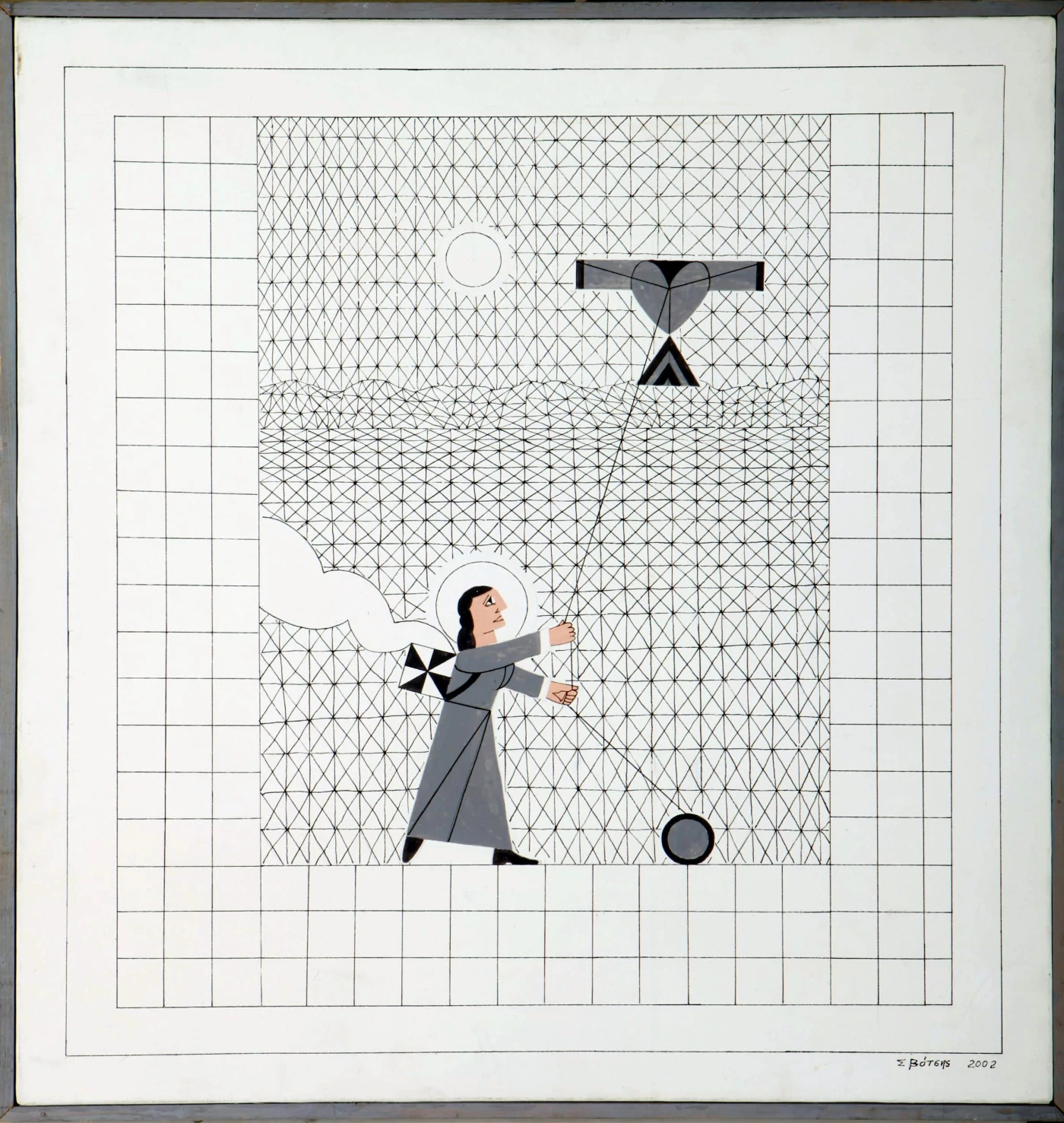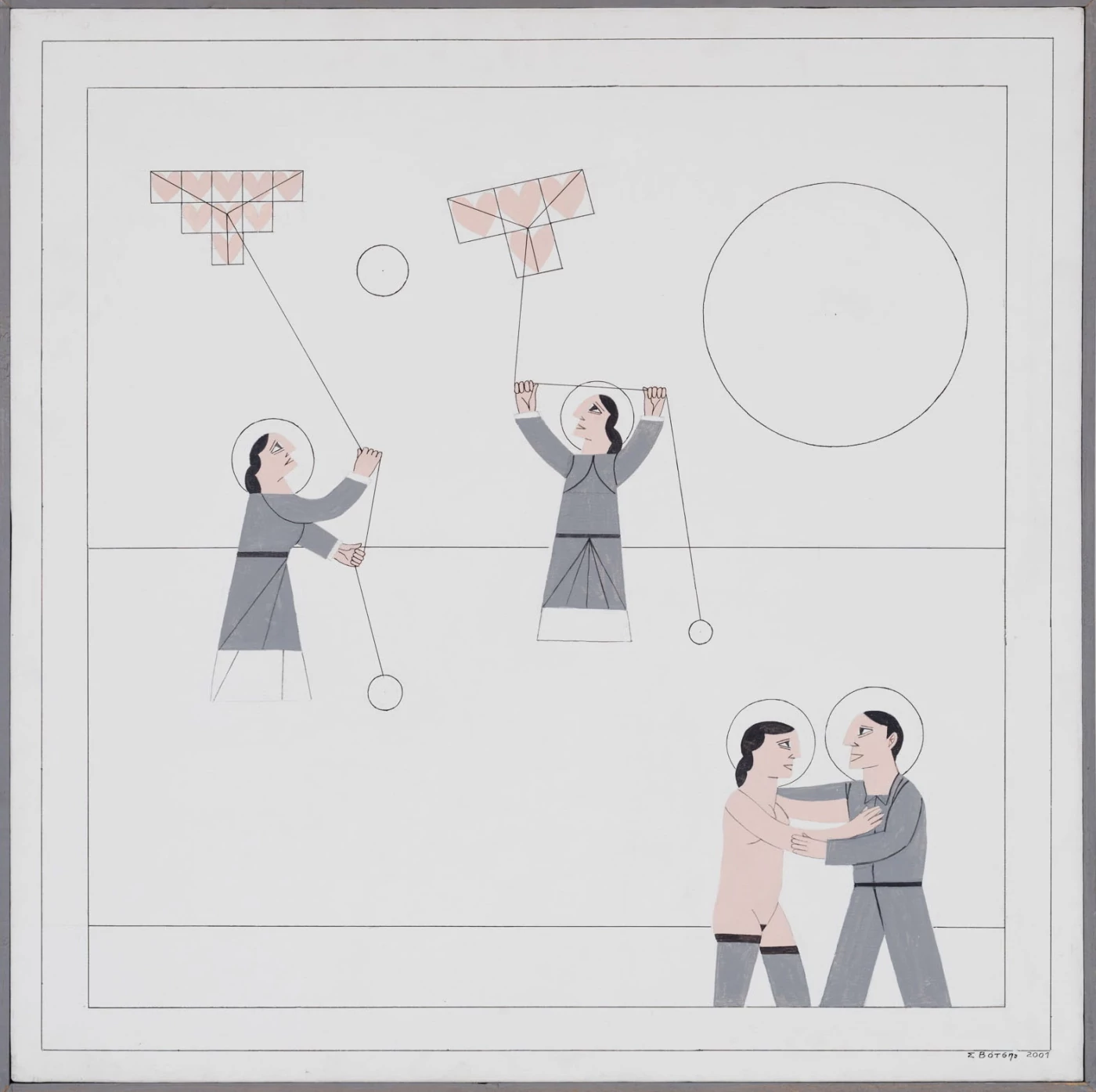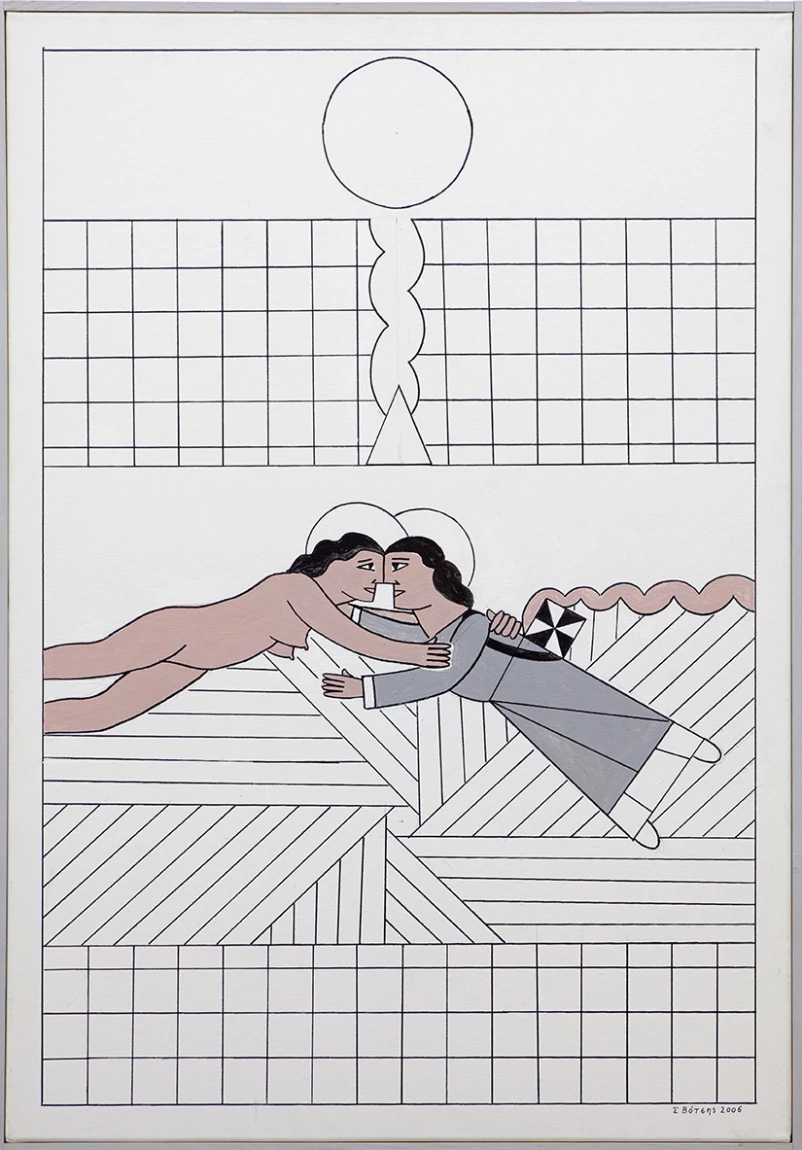Stelios Votsis
Ancient saints in a monochrome world




There is a strict vocabulary to the minimalist paintings of Stellos Votsis; regimented grids on white paperboard, punctuated with flattened, iconic human figures who fly kites and send up smoke signals to a blank circular sun. Votsis’s style is so consistent that his decades-long oeuvre appears to illustrate a single, somber story. Votsis’s longtime friend and fellow Cypriot artist Stass Paraskos described Votsis’s career saying, “Images of pain, loneliness and longing, with human figures set in geometrical landscapes, became hallmarks of the artist Stelios Votsis’s work.”
Votsis was born in 1928 on the island of Cyprus, in a town named Larnaca, meaning sarcophagus. The city’s palm-lined promenade packs with peacocking tourists every summer to see the history Larnaca wears its history on its sleeve. Phoenician temples, a Byzantine fort and an Ottoman Aqueduct that’s still in use, Votsis’s hometown is defined by the 3,000 tombs that spot the city. Even the school where Votsis’s artistic talent was first encouraged is just a kilometer from the tomb that the biblical Lazarus rose from.
Votsis left Larnaca to study art in England, first at Saint Martin’s School of Arts, then graduating from the Slade School of Arts in 1955. During his time in England we see the first hints at the unbending rigor that defined Votsis’s mature work. In his second year at the Slade, a drawing by Votsis won first prize in a competition—which he refused, believing his work did not deserve it. Votsis’s body of work is so consistent in part because he burned much of his early work. Anything that didn't meet his standard for quality was destroyed.
In 1963, Stelios Votsis returned to a changed Cyprus. While Votsis studied in England, Cyprus won its independence from the United Kingdom. Votsis moved to the island’s capital city, Nicosia, and in the midst of rapid social change and violence between the island’s Greek and Turkish populations he co-founded the Cyprus Chamber of Fine Arts, working with other artists to reconcile modern art with the history-soaked world of the Mediterranean. For the next 40 years he created work that was shown in India, Italy, Brazil, Argentina, Norway and Germany, and Belgium, always refining his signature style. Part modern minimalism, with space laid out in Agnes Martin-like grids, and part ancient, a cast of sad-eyed Byzantine saints trapped in a world of geometry. Halo'd figures reaching for heaven.
...
Got questions, comments or corrections about Stelios Votsis? Join the conversation in our Discord, and if you enjoy content like this, consider becoming a member for exclusive essays, downloadables, and discounts in the Obelisk Store.








